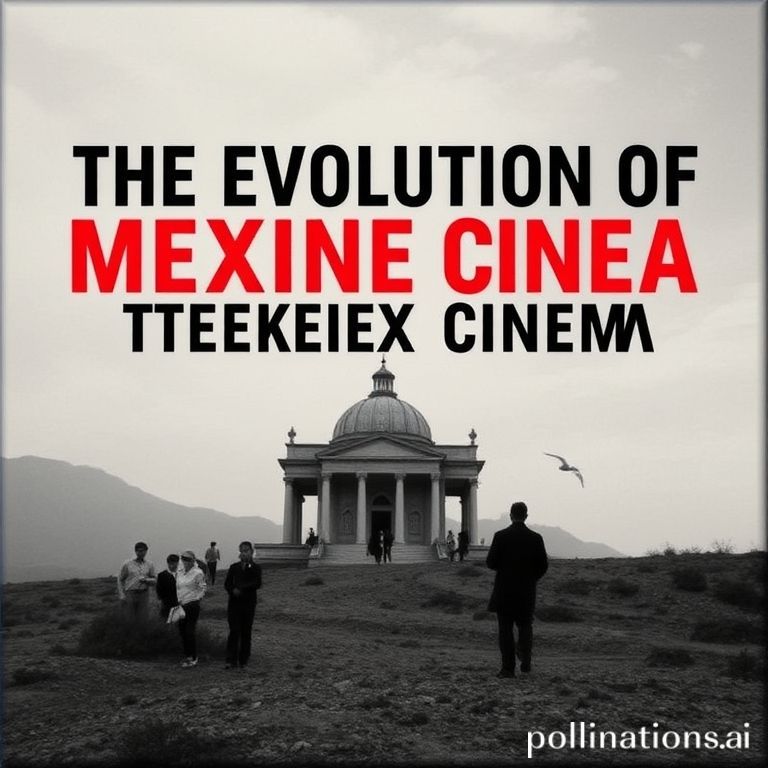Mexican cinema is more than just entertainment; it’s a vibrant reflection of the nation’s history, culture, and social evolution. From its silent film beginnings to its current global recognition, the industry has consistently mirrored the soul of Mexico, captivating audiences with its unique storytelling and artistic vision. Join us as we explore the fascinating journey of Mexican cinema, uncovering the key moments and figures that have shaped its trajectory.
This journey through time will reveal how Mexican filmmakers have used their craft to portray the country’s struggles, triumphs, and everything in between. From iconic Golden Age stars to groundbreaking contemporary directors, the evolution of Mexican cinema is a captivating narrative in itself.
The Silent Era and Early Sound Films
The first steps in Mexican cinema occurred in the late 19th century, mirroring the global excitement surrounding the Lumière brothers’ invention. Early Mexican filmmakers captured everyday life, documenting events and showcasing the beauty of the country. As the silent era progressed, narrative films began to emerge, often focusing on historical events and melodramatic stories. The arrival of sound in the 1930s revolutionized the industry, giving birth to the Golden Age of Mexican cinema.
Key Figures of the Silent Era
- Salvador Toscano: A pioneer who documented early Mexican life and events.
- The Stahl Brothers: Introduced narrative filmmaking with productions like “El Transgresor.”
The Golden Age (1930s-1950s)
The Golden Age is considered the pinnacle of Mexican cinema. During this period, the industry flourished, producing a wealth of classic films that gained international acclaim. This era was characterized by its star system, with iconic actors and actresses becoming household names across Latin America and beyond. The films of the Golden Age often depicted themes of nationalism, romance, and social commentary, reflecting the values and aspirations of post-revolutionary Mexico.
Iconic Actors and Actresses
- María Félix: Known as “La Doña,” she was a powerful and charismatic actress.
- Pedro Infante: A beloved singer and actor, embodying the everyman charm.
- Dolores del Río: An internationally recognized beauty and talent, she starred in both Mexican and Hollywood films.
Genre Defining Films
- Allá en el Rancho Grande (1936): Often credited with launching the Golden Age, a quintessential “comedia ranchera”.
- Dos Tipos de Cuidado (1953): Starring Pedro Infante and Jorge Negrete, this film exemplifies the camaraderie and musicality of the era.
Decline and Rebirth (1960s-1990s)
The Golden Age eventually faded, giving way to a period of decline in the 1960s and 70s. Economic challenges and changing tastes contributed to a decrease in film production and audience interest. However, the seeds of a new wave were being sown. Independent filmmakers began experimenting with new styles and themes, challenging the established norms of the industry. The 1990s saw a gradual resurgence, fueled by government support and the emergence of talented new directors.
The New Mexican Cinema (2000s-Present)
The 21st century has witnessed a remarkable renaissance in Mexican cinema. A new generation of directors has emerged, pushing creative boundaries and achieving international recognition. Films like “Amores Perros” and “Y Tu Mamá También” catapulted Mexican cinema back onto the global stage, paving the way for further success. Mexican filmmakers are now tackling a diverse range of subjects, from social issues to personal dramas, showcasing the richness and complexity of Mexican life.
Key Contemporary Directors
- Alejandro González Iñárritu: Known for his visually stunning and emotionally resonant films such as “Birdman” and “The Revenant.”
- Alfonso Cuarón: A master of cinematography and storytelling, with acclaimed works like “Gravity” and “Roma.”
- Guillermo del Toro: Celebrated for his imaginative and fantastical films, including “Pan’s Labyrinth” and “The Shape of Water.”
International Recognition
Mexican directors have consistently earned accolades at prestigious film festivals, including Cannes, Venice, and the Academy Awards. This recognition has not only elevated the status of Mexican cinema but has also opened doors for greater international collaborations and funding.
Conclusion
The evolution of Mexican cinema is a testament to the power of storytelling and the enduring spirit of Mexican culture. From its humble beginnings to its current global prominence, the industry has continually adapted and reinvented itself, reflecting the ever-changing landscape of Mexico. As we look to the future, one thing is certain: Mexican cinema will continue to captivate audiences with its unique voice and artistic vision, solidifying its place as a vital force in the world of film.
Want to learn more about Mexican culture and traditions? Check out our other articles on Life in Mexico!
IMAGE: A montage showcasing different eras of Mexican cinema. The top left shows a scene from a silent film with sepia tones. The top right shows a glamorous black-and-white image of Maria Felix from the Golden Age. The bottom left shows a vibrant scene from “Amores Perros” with Gael Garcia Bernal. The bottom right shows a still from “Roma” with a nostalgic, black-and-white aesthetic. The overall mood is celebratory and reflective.


